Everything You Need To Know About The Tattoo Healing Process
Discover the phases of the tattoo recovery process before stepping into the world of ink.

Image: Shutterstock
Tattoos are a work of art. Whether you have already gone under the tattoo pen or are planning to take the plunge and get your first inked design, the tattoo healing process is never the same. Once you get a fresh tattoo, you are walking around with an open wound, albeit a pretty one. It hurts a lot, to say the least. However, it’s even more painful to see the beautiful tattoo turn patchy or fade quickly.

That’s what makes the tattoo aftercare process very important. After the tattooing process, your skin may feel itchy at times. Without the right aftercare, your newly tattooed skin runs the risk of an infection, sun damage, dryness, and more. You may even experience scabbing or skin peeling. But don’t press the panic button now. It’s all part of the skin’s healing process. We are here to help you learn everything you need to know about the tattoo healing process and what to expect during the phases.
Scroll down to learn more about what the tattoo healing stages entail and how to make your inked skin look healthy and vivid during its healing process.
In This Article
How Long Does It Take For A Tattoo To Heal?

The rate of tattoo healing may vary from person to person, depending on factors like the tattoo size, area, and complexity. How long a tattoo may take to heal also depends on the placement. For instance, the healing process of finger tattoos differs from that of shoulder or arm tattoos. The skin on the fingers regenerates faster than the rest of the hand, contributing to faster healing.
After getting a tattoo, the healing phase starts with the outer layer of the skin. This initial healing phase generally takes 2-3 weeks. On the other hand, it might take 4-6 weeks or several months for the inner layers of skin to heal (1), (2).
Also, larger tattoos take longer than usual to heal owing to their size and the area they cover. While this is one factor that may lead to a prolonged recovery time, multiple other reasons may also delay the healing process. For instance, not following the right tattoo aftercare routine, not moisturizing the affected area well, picking at scabs, using alcohol-based lotions, and not using SPF can exacerbate skin issues.
 Pro Tip
Pro TipThe healing of the tattoo depends on your body and the aftercare you give to your artwork. The next section explains the stages of tattoo healing to help you understand how it unfolds and what to expect during the tattoo healing process.
Key Takeaways
- The tattoo healing and recovery time can vary from individual to individual. It is determined by various factors such as the size, area, complexity of the tattoo, and aftercare.
- The tattoo healing process happens in three stages during which you may notice inflammation, peeling skin, or scabbing, leading to healing.
- Practicing proper aftercare and keeping the skin clean and moisturized, avoiding sun exposure, etc., can help accelerate the healing process and prevent the risk of infection.
- Persistent swelling, itching, redness, fever, and pus discharge may indicate that the skin has not healed properly after the tattooing process.
Stages Of Tattoo Healing

The tattoo healing process can be divided into three stages (3).
Days 1 To 3: Inflammation
The tattooed area may appear red, tender, and swollen. The skin might also feel warm and sore and ooze blood, excess ink, or a mix of both. One might also feel a burning or prickling sensation or even notice inflammation during the initial healing stage.
Day 4 To 14: Visible Recovery
This is the early healing stage, where the skin begins to peel and may also turn flaky. You may experience tattoo scabbing or itching, which is normal and similar to how the skin heals from a sunburn. At this stage, it is crucial to resist the urge to pick at the scabs. Pulling at the scabs or scratching your skin may lead to injury, extend the recovery time, disturb the underlying ink on the skin, and even lead to infections. You may read about tattoo scabbing in detail to get a better understanding of how to handle it properly.
Days 14 To 30: Invisible Recovery
At this stage, the tattoo may look healed as its colors start to settle in. But this is only the outer layer of skin that has healed completely. The skin beneath the tattoo might take a few months to heal.
However, note that the healing process is unique to everyone, and various factors such as aftercare practices, skin type, location of the tattoo on the body, tattoo size and complexity, and even the body’s wound-healing response may impact the tattoo healing journey. Please consult a dermatologist if you notice your skin has not healed after a month or the tattooed area still has redness, inflammation, oozes pus, or feels stingy.
Proper tattoo aftercare plays a significant role in keeping the healing process going smoothly. So, how to take care of a new tattoo properly? Scroll down to the next section for some care tips for you to remember.
Aftercare Tips For Tattoo Healing

Proper aftercare can help speed up the healing process. After getting inked, your tattoo artist will clean the tattoo and cover it with a bandage that should be left on for 12-72 hours or as instructed. Do not remove this bandage until given the go-ahead by your tattoo artist. Here are a few essential tips you can follow to give the skin the best possible tattoo care and speed up the skin’s healing process:
1. Keep The Tattoo Clean
Clean the tattoo
area every day using fragrance-free, antibacterial soap and warm water. Avoid using harsh soaps or scrubbing the skin excessively to prevent skin irritation. Pat the tattooed skin dry with a paper towel. Do not dry it aggressively. If you feel the tattoo is still wet, let it air dry before applying any ointment or moisturizer.
2. Keep The Area Covered
Covering it for the first few days will prevent the risk of infection and contamination and allow the skin to breathe. Once you remove the wrap or the bandage applied by the tattoo artist, you should not cover it with anything until the tattoo is completely healed.
3. Keep The Skin Moisturized
Apply a thin layer of post-tattoo skin care cream or a fragrance-free moisturizer to keep the dry skin hydrated, accelerate healing, and prevent excessive dryness. It is generally recommended to apply a moisturizer twice a day, once in the morning and once at night. Consult a doctor or your tattoo artist to get product recommendations for tattoo aftercare.
 Pro Tip
Pro Tip4. Avoid Using Scented Products
Freshly tattooed skin is sensitive. Using scented products containing chemicals such as synthetic fragrances could trigger allergic reactions, such as itching, rashes, or redness. This may delay the tattoo healing process.
5. Avoid Sun Exposure
Getting a new tattoo means allowing a needle to constantly pierce your skin. This leads to trauma and makes your skin highly sensitive to direct sunlight, leaving it even more vulnerable to sun damage. Excessive sun exposure can cause the tattoo to fade and lead to sunburn. Always use a broad-spectrum SPF 30+ or higher. Apply it at least 15 minutes before going out into the sun. Remember to reapply sunscreen every 2 hours for maximum protection.
6. Wear Loose-Fitting, Breathable Clothes
Tight clothes can rub against the tattoo and impede the healing process. Hence, it’s advisable to wear loose clothes made from natural fabrics that won’t irritate the tattooed area and help minimize friction. If possible, wear old clothes as the tattoo may bleed color during the initial healing stage.
Jasen Sorell, a blogger, revealed his aftercare ritual for healing an inked body part. He writes, “I’ve been showering like normal, but avoiding scrubbing the tattoo. Instead, I get a lather going in my hand and pat the suds on my tat. I dry the tattoo the same way, patting instead of wiping (i).” The blogger also emphasized keeping the skin clean and moisturized all the time, which is essential for the tattoo to heal quickly.
Following the above steps, at least for a couple of weeks, can help save you from discomfort and speed up the healing process. However, some signs may indicate that your tattoo has not healed yet. Find out what they are in the next section.
Signs Your Tattoo Isn’t Healing Properly
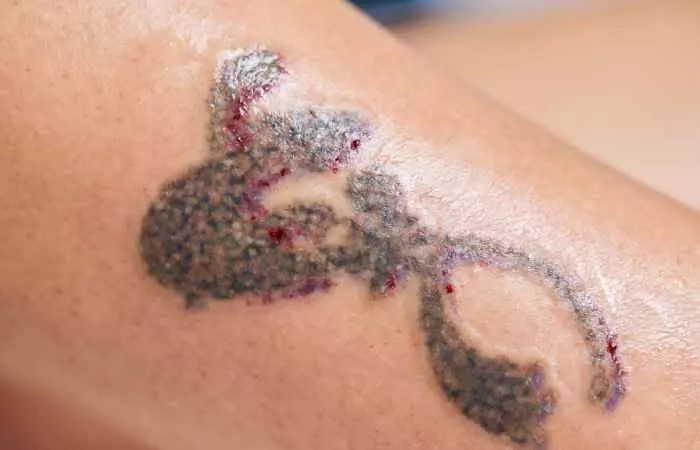
Your tattoo might not be healing if you continue to experience redness, swelling, and itching even after a few weeks of getting your skin inked. It may indicate that your skin hasn’t healed properly or is infected (4). Look for these visible signs to check if your tattooed skin is healing as it should be:
- Fever: A high body temperature can be a sign that your tattoo is infected. In such instances, seek medical intervention immediately (5).
- Redness: If the skin continues to appear reddish days after undergoing the tattoo procedure, then chances are your skin recovery is incomplete.
- Fluid Discharge: Excessive fluid or pus discharge may also indicate an infection.
- Swollen Skin: Experiencing swollen, tender, puffy skin is normal in the initial stages of recovery, but it is an issue if it becomes persistent.
- Itching: Severe itching may indicate the body’s allergic reaction to the ink. It is also called a tattoo rash, a type of contact dermatitis.
- Increased Pain Or Sensitivity: If the pain doesn’t ease over time or becomes more intense, it may signal an infection or another complication.
- Scarring: Scabs around the tattooed area for a prolonged time may indicate a delayed healing process and can cause textural changes (6).
If you notice any of these symptoms after weeks of getting inked, please consult a dermatologist immediately.
The tattoo healing journey is slow and demands patience. The outer skin might look healed in 2-3 weeks, but the complete skin recovery can take up to months. During the initial recovery phase, you may experience pain, swelling, or fluid discharge from the skin, which should resolve within a week. Also, the tattoo might appear darker, shadowy, or even duller after a month or so. Following specific aftercare instructions suggested by dermatologists or tattoo experts may help you to keep away infection and let your skin heal properly.
Illustration: Everything You Need To Know About The Tattoo Healing Process

Image: Stable Diffusion/StyleCraze Design Team
Proper aftercare ensures that your tattoo heals properly without any infections and complications. Watch this video to learn more about the aftercare practices to follow after getting a tattoo!
Frequently Asked Questions
What should I do if my tattoo feels warm?
As mentioned earlier, some warmth is normal initially, but if it persists or is accompanied by redness and swelling, it may indicate infection. In this case, consult your tattoo artist or a healthcare professional.
Does drinking water help heal tattoos faster?
Yes, drinking water helps to maintain the skin’s moisture levels and may accelerate the healing of tattoos by keeping the skin hydrated.
Do tattoos feel tight while healing?
Yes, it’s pretty common for the skin around the tattoo to feel tight during the healing process. The tightness is due to the body’s natural reaction to the injury or trauma caused by the needling process.
How long do tattoos take to heal enough before swimming?
Experts recommend to wait for at least 2-3 weeks before going for swimming sessions after the tattooing process. During the initial weeks, the body goes through the healing process, and exposure to water for a prolonged period might increase the risk of infection or bacterial contamination.
When can I start exercising after getting a tattoo?
It is generally recommended to avoid extensive physical activities for at least the initial few days after getting a tattoo. It is because these activities can cause excessive sweating and friction, which in turn can delay the healing process, affect the appearance of the tattoo, and cause discomfort or skin complications.
How do you know your tattoo has healed?
A healed tattoo skin area does not have any skin peeling, redness, or scabs. You may notice that the colors have settled in well, and even the skin texture appears normal. The skin also feels comfortable to touch, and the tattoo appears more vibrant than usual.
Can I shave over my healing tattoo?
It is not recommended to shave over the healing tattoo. During the initial days, the skin on the tattoo area is like an open, fresh wound. It appears tender and sensitive, and using a razor on it can hamper the healing process, leading to bacterial contamination, skin irritation, discomfort, and infection. Consult an experienced tattoo artist before shaving over your tattoo.
Personal Experience: Source
StyleCraze's articles are interwoven with authentic personal narratives that provide depth and resonance to our content. Below are the sources of the personal accounts referenced in this article.
i. A Tattoo Healing Processhttps://thetattoonerd.blogspot.com/2013/10/a-tattoo-healing-process.html
References
Articles on StyleCraze are backed by verified information from peer-reviewed and academic research papers, reputed organizations, research institutions, and medical associations to ensure accuracy and relevance. Read our editorial policy to learn more.
- Adolescent and Young Adult Tattooing, Piercing, and Scarification
https://publications.aap.org/pediatrics/article/140/4/e20163494/38062/Adolescent-and-Young-Adult-Tattooing-Piercing-and?autologincheck=redirected - Tattoo aftercare management with a dermo‐cosmetic product: Improvement in discomfort sensation and skin repair quality
https://www.ncbi.nlm.nih.gov/pmc/articles/PMC9290601/ - Tattoo-Associated Skin Reaction: The Importance of an Early Diagnosis and Proper Treatment
https://www.ncbi.nlm.nih.gov/pmc/articles/PMC4132403/ - TATTOOS
https://www.ncbi.nlm.nih.gov/pmc/articles/PMC5868782/ - Systemic infections associated with tattoos or permanent makeup: A systematic review
https://pubmed.ncbi.nlm.nih.gov/33902933/ - Complications of Tattoos and Tattoo Removal: Stop and Think Before you ink
https://www.ncbi.nlm.nih.gov/pmc/articles/PMC4411590/
Read full bio of Anastasiia Gatsko
Read full bio of Joyce Joyson
Read full bio of Aparna Harry







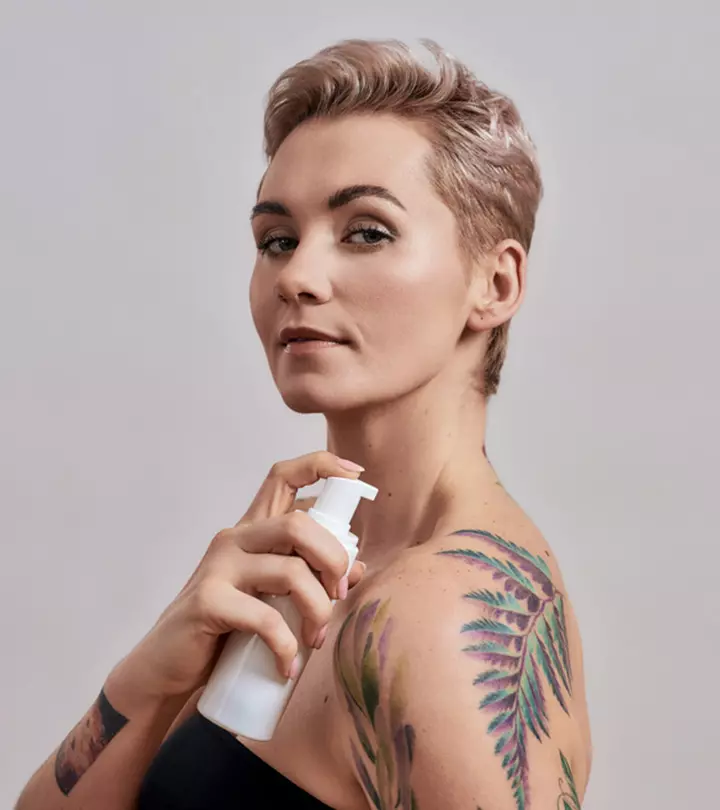
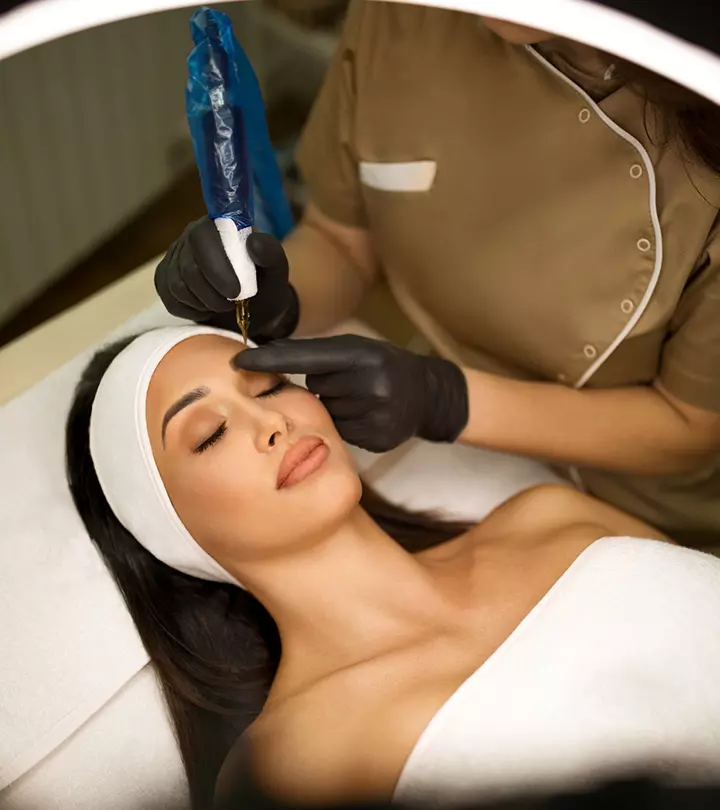




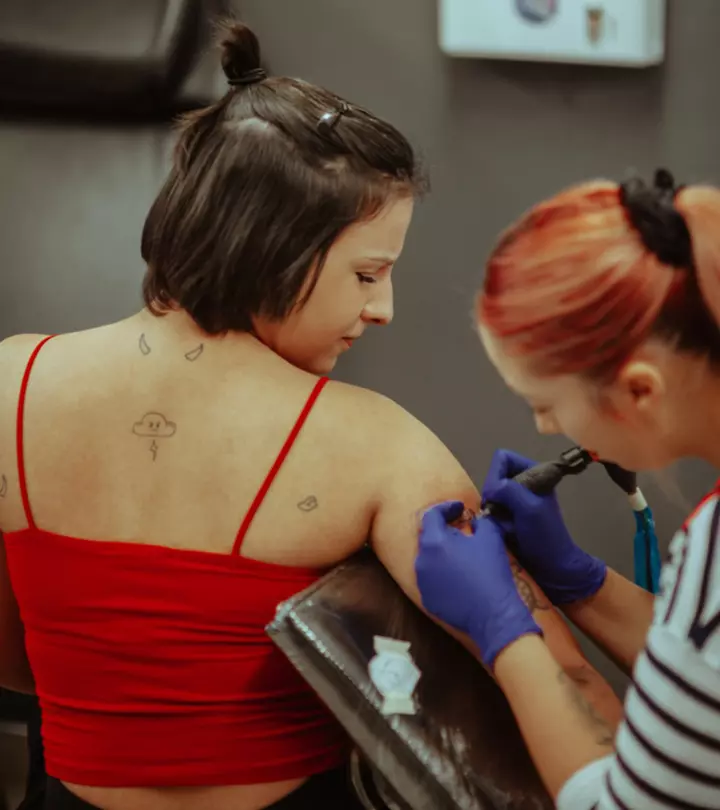
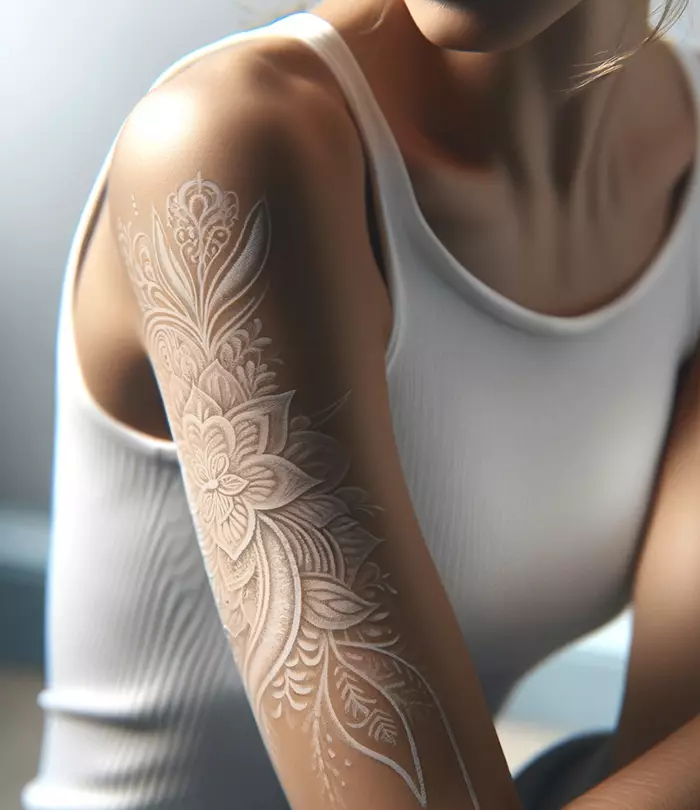
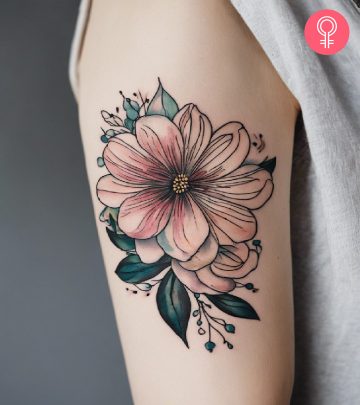



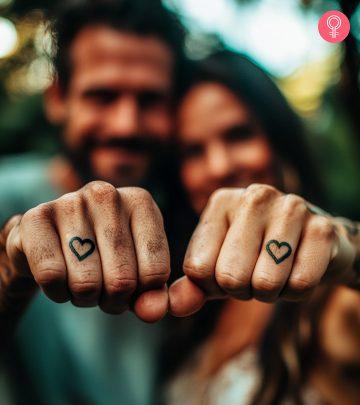
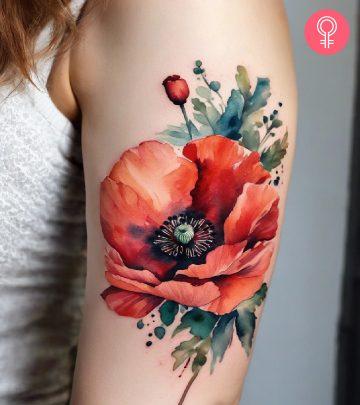
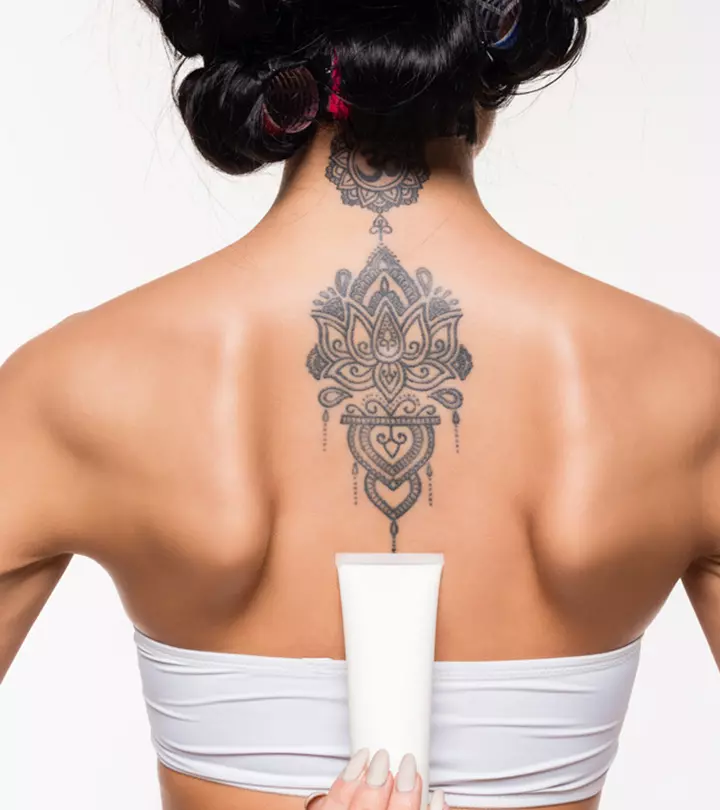

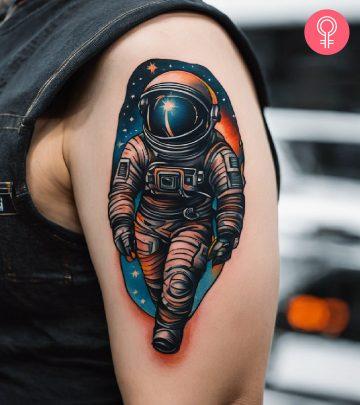
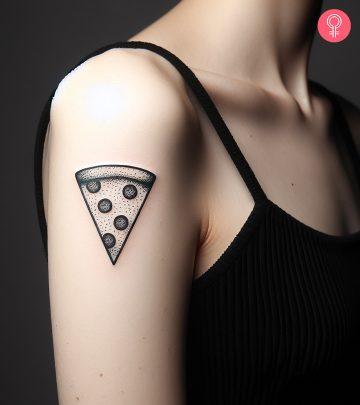

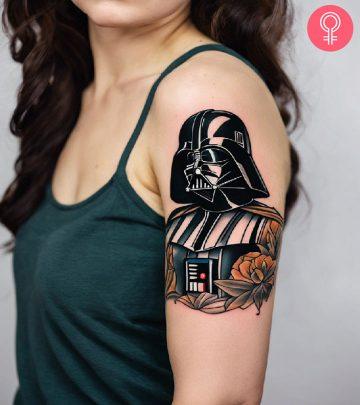
Community Experiences
Join the conversation and become a part of our empowering community! Share your stories, experiences, and insights to connect with other beauty, lifestyle, and health enthusiasts.